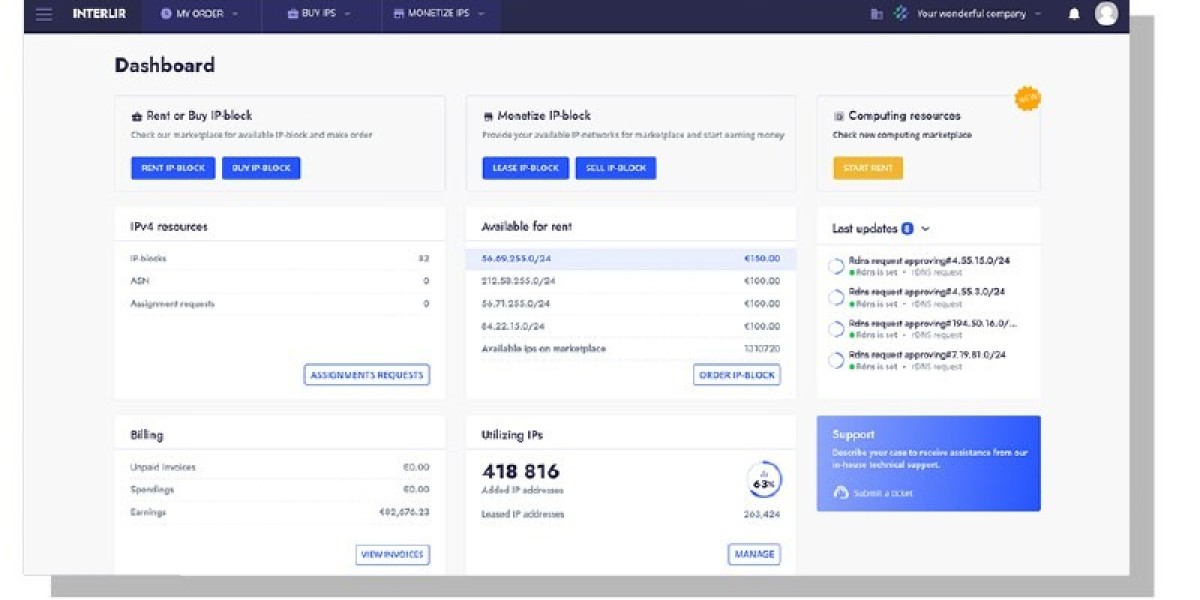The Nuclear Energy Industry is witnessing significant growth as countries strive to meet increasing energy demands while reducing carbon emissions. As per Market Research Future, nuclear energy remains a critical component of the global energy mix, offering reliable, large-scale, and low-carbon electricity generation. With advancements in technology, regulatory support, and a growing focus on sustainable energy, the nuclear energy industry is poised to play a pivotal role in shaping the energy landscape of the 21st century.
Understanding Nuclear Energy
Nuclear energy is generated through nuclear fission, a process in which the nucleus of an atom, typically uranium or plutonium, splits into smaller parts, releasing a substantial amount of energy in the form of heat. This heat is then used to produce steam, which drives turbines to generate electricity. Unlike fossil fuels, nuclear power produces negligible greenhouse gas emissions during operation, making it a clean and sustainable energy source.
Modern nuclear power plants are designed with advanced safety systems, ensuring reliable operations while minimizing risks associated with radiation and waste management. Nuclear energy also provides a stable baseload power supply, which is essential for maintaining grid stability alongside intermittent renewable sources such as solar and wind.
Market Overview and Growth Outlook
The global nuclear energy market is experiencing steady growth driven by the need for sustainable energy, government support, and technological innovation. Key regions, including North America, Europe, and Asia-Pacific, are actively investing in new nuclear projects, plant modernization, and advanced reactor technologies.
Asia-Pacific, particularly China and India, is emerging as a major market due to rapid industrialization, urbanization, and increasing electricity demand. Europe and North America continue to focus on upgrading existing infrastructure and adopting small modular reactors (SMRs) to enhance efficiency and safety.
The market is expected to grow as governments implement policies to reduce carbon emissions, enhance energy security, and diversify energy sources. Nuclear energy’s role in achieving climate targets and supporting economic development ensures its relevance in the future energy mix.
Key Types of Nuclear Reactors
Nuclear reactors can be categorized based on design, fuel type, and cooling systems:
1. Pressurized Water Reactors (PWR):
The most widely used reactor type, PWRs use water under high pressure as a coolant and neutron moderator. They are known for their stability, reliability, and safety.
2. Boiling Water Reactors (BWR):
These reactors generate steam directly from water heated by nuclear fission, which then drives the turbines. BWRs are simpler in design and widely deployed worldwide.
3. Heavy Water Reactors (HWR):
Using heavy water as a moderator, HWRs can use natural uranium as fuel, making them suitable for countries with limited enriched uranium resources.
4. Fast Breeder Reactors (FBR):
FBRs generate more fuel than they consume, improving fuel efficiency and contributing to sustainable nuclear fuel cycles.
5. Small Modular Reactors (SMR):
SMRs are compact, factory-fabricated reactors designed for scalability, faster construction, and deployment in remote or industrial locations.
Market Drivers
Several factors are propelling the growth of the nuclear energy industry:
1. Rising Energy Demand:
Global electricity consumption continues to rise, driving the need for large-scale, reliable power generation.
2. Climate Change and Decarbonization:
Nuclear energy produces minimal greenhouse gas emissions, supporting governments’ efforts to achieve carbon neutrality.
3. Energy Security:
Nuclear power provides a stable and predictable energy supply, reducing dependence on imported fossil fuels.
4. Technological Advancements:
Modern reactors, SMRs, and advanced fuel cycles improve efficiency, safety, and cost-effectiveness.
5. Government Incentives and Policies:
Supportive regulations, subsidies, and long-term nuclear strategies encourage investment and development.
6. Complementing Renewable Energy:
Nuclear energy ensures grid stability and consistent baseload power, complementing intermittent sources such as solar and wind.
Emerging Trends in the Nuclear Energy Industry
The nuclear energy industry is evolving with technological and market trends:
Development of Small Modular Reactors (SMRs): Compact reactors with shorter construction timelines and flexible deployment are gaining attention worldwide.
Advanced Fuel and Coolant Technologies: New fuels and high-temperature reactors improve efficiency and reduce waste generation.
Digital Monitoring and AI Integration: Smart monitoring systems optimize plant performance, predictive maintenance, and operational safety.
Nuclear Hybrid Systems: Integration with renewables, hydrogen production, and energy storage enhances energy efficiency and versatility.
Public-Private Partnerships: Collaborative efforts between governments and private companies accelerate nuclear innovation and deployment.
Decommissioning and Waste Management Innovations: Advanced methods for managing spent fuel and decommissioned plants improve sustainability.
These trends indicate a focus on sustainability, efficiency, and safety in the nuclear sector.
Challenges in the Nuclear Energy Industry
Despite its potential, the industry faces several challenges:
High Capital Costs: Building and maintaining nuclear plants requires significant upfront investment.
Regulatory and Licensing Complexity: Long approval processes and stringent safety regulations can delay projects.
Nuclear Waste Management: Safe disposal and long-term storage of radioactive waste remain critical challenges.
Public Perception and Acceptance: Safety concerns, nuclear accidents, and environmental impact influence public opinion.
Competition from Renewables: The decreasing costs of solar, wind, and energy storage technologies create competitive pressure.
Addressing these challenges requires continued innovation, robust policy frameworks, and public engagement.
Regional Insights
North America:
The U.S. and Canada focus on upgrading existing nuclear infrastructure and developing SMRs to enhance energy security and decarbonization goals.
Europe:
France, the UK, and Germany are modernizing nuclear plants, investing in advanced reactor technologies, and pursuing hybrid energy solutions.
Asia-Pacific:
China, India, and South Korea are expanding nuclear capacity to meet rising electricity demand, industrial growth, and climate commitments.
Middle East & Africa:
Emerging nuclear programs aim to diversify energy sources, enhance grid reliability, and support industrialization.
Latin America:
Brazil, Argentina, and other countries are exploring nuclear energy for reliable electricity generation and economic development.
Applications of Nuclear Energy
Nuclear energy has diverse applications:
Electricity Generation: Providing large-scale, low-carbon baseload power for residential, commercial, and industrial use.
Industrial Process Heat: Supplying high-grade heat for chemical, steel, and manufacturing industries.
Desalination: Supporting seawater desalination to provide fresh water in arid regions.
Medical and Research Applications: Producing isotopes for diagnostics, treatment, and scientific research.
Hydrogen Production: High-temperature reactors can enable green hydrogen production as part of decarbonization strategies.
Environmental and Economic Benefits
Nuclear energy provides significant environmental benefits by reducing greenhouse gas emissions, conserving natural resources, and minimizing land use compared to fossil fuels. Economically, it ensures energy reliability, stabilizes electricity costs, generates high-skilled jobs, and drives technological innovation.
Frequently Asked Questions (FAQ)
1. What is nuclear energy?
Nuclear energy is electricity generated through nuclear fission, where atomic nuclei split and release energy as heat, which is converted into electricity.
2. Why is nuclear energy considered a clean energy source?
It produces negligible greenhouse gas emissions during operation and helps reduce reliance on fossil fuels.
3. What are the main applications of nuclear energy?
Applications include electricity generation, industrial heat, desalination, medical isotope production, and hydrogen generation.
Conclusion
The nuclear energy industry is a cornerstone of global efforts to achieve clean, reliable, and sustainable energy. As per Market Research Future, advancements in technology, supportive policies, and growing energy demand are driving the market forward.
Despite challenges like high capital costs and waste management, nuclear energy remains a safe, low-carbon, and efficient solution capable of complementing renewable energy and addressing the world’s energy needs. By integrating modern reactors, SMRs, and hybrid energy systems, the nuclear energy industry is poised to shape a sustainable and resilient energy future.
More Related Reports:
Three Phase Home Standby Genset Market








